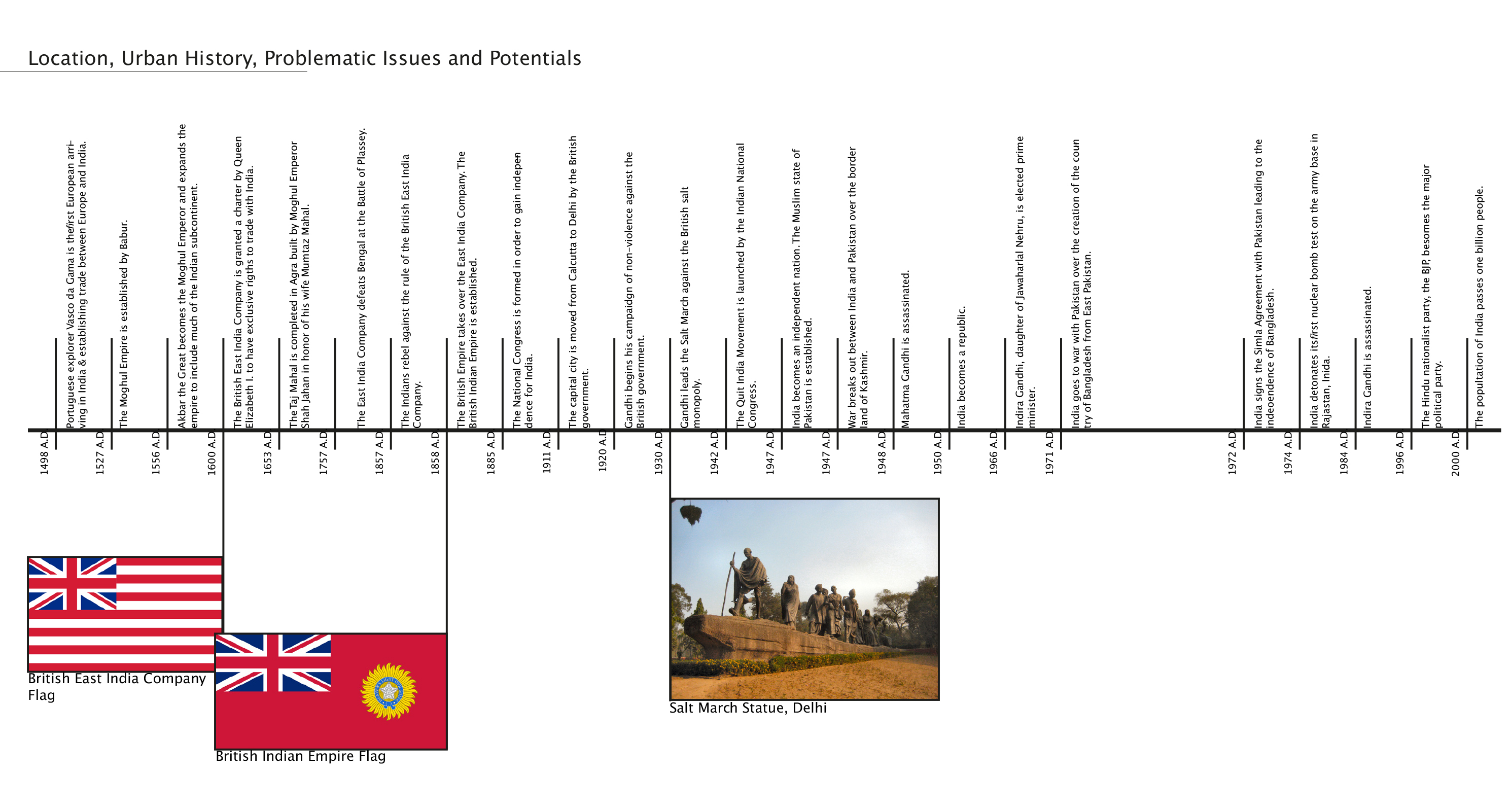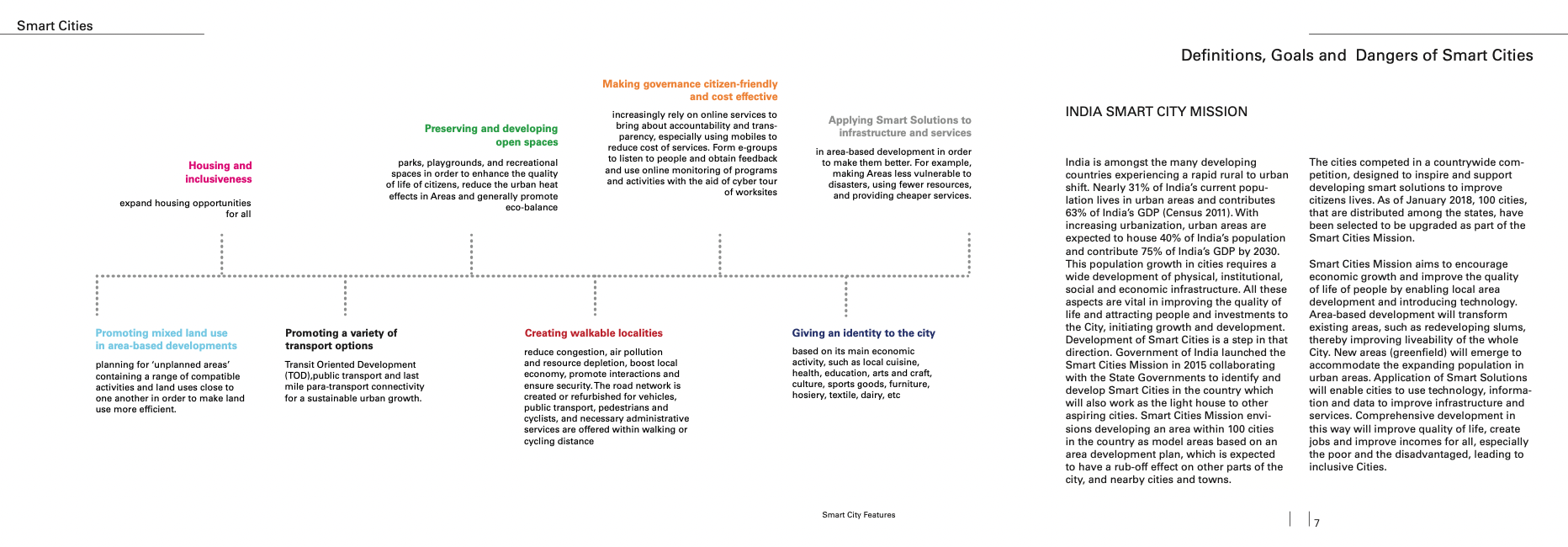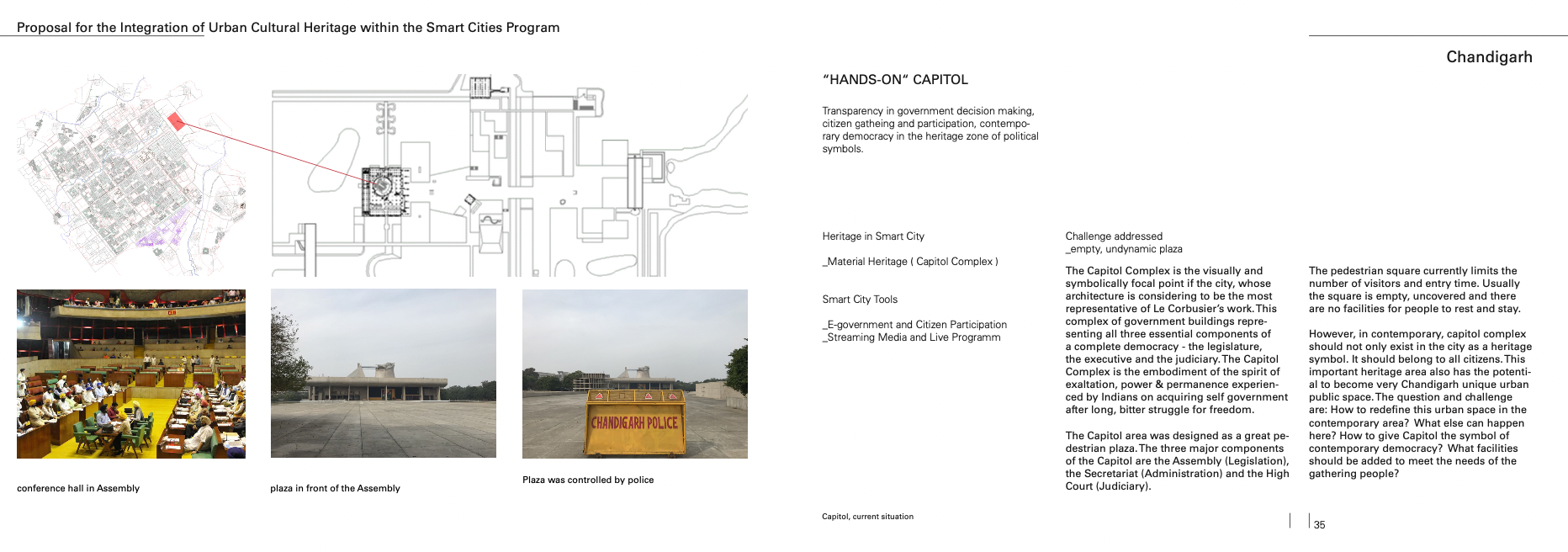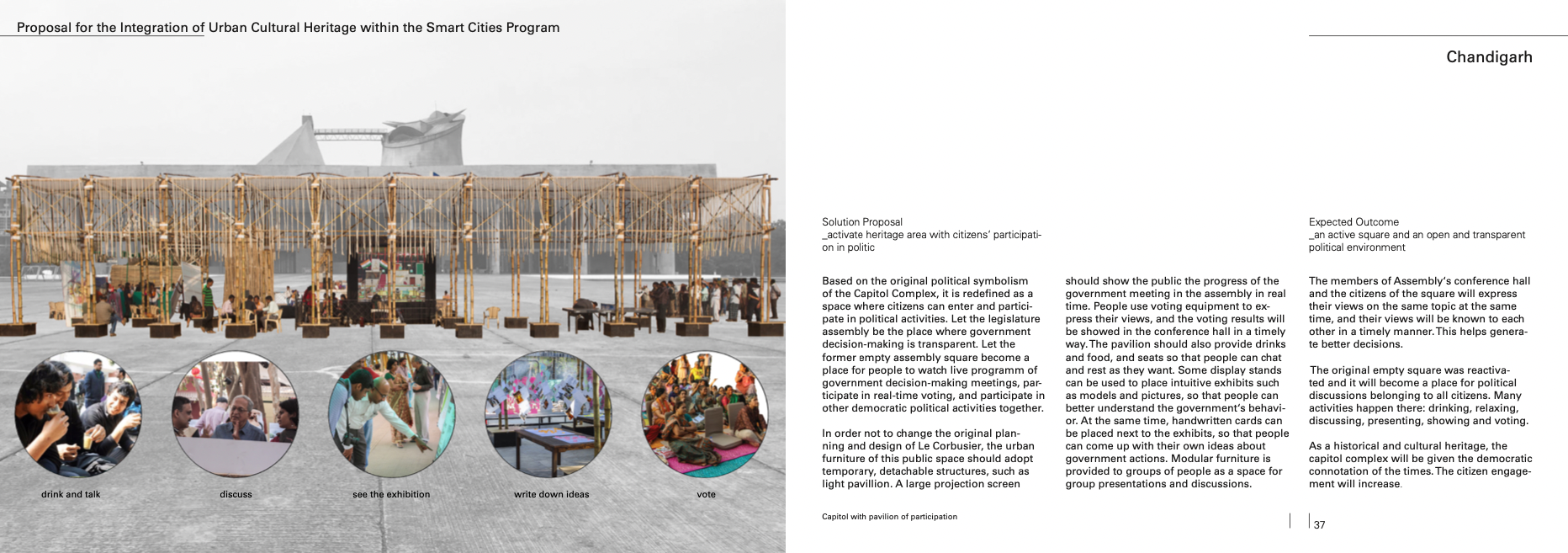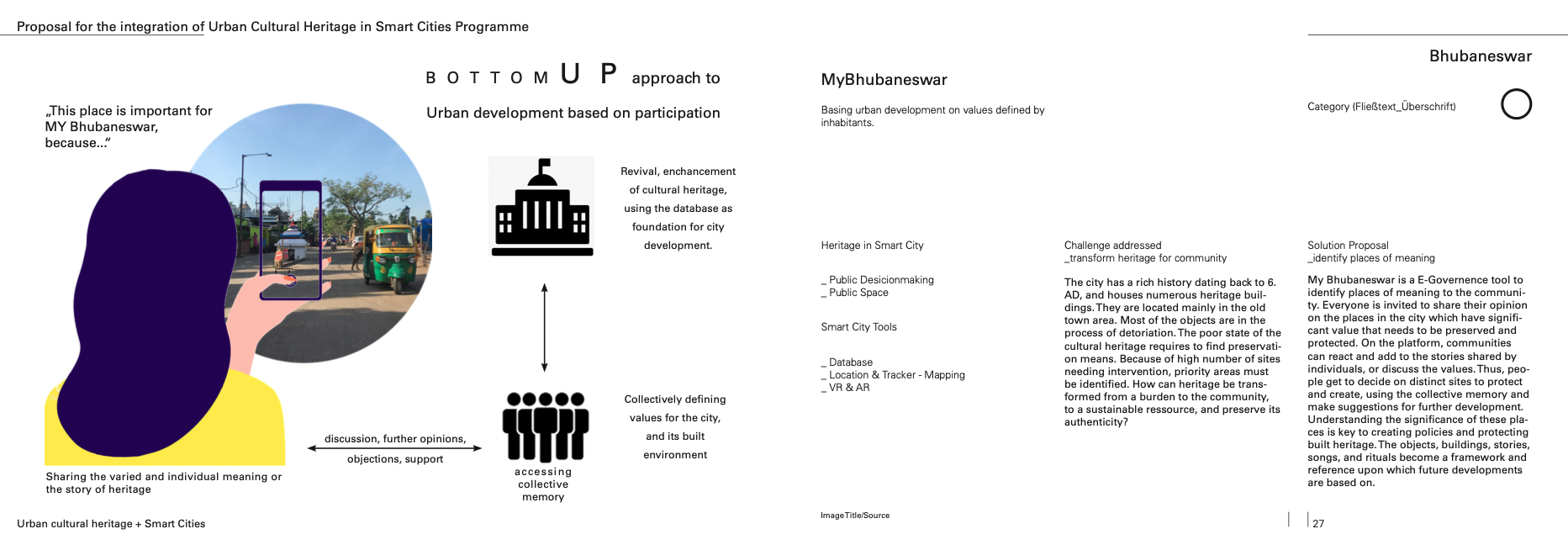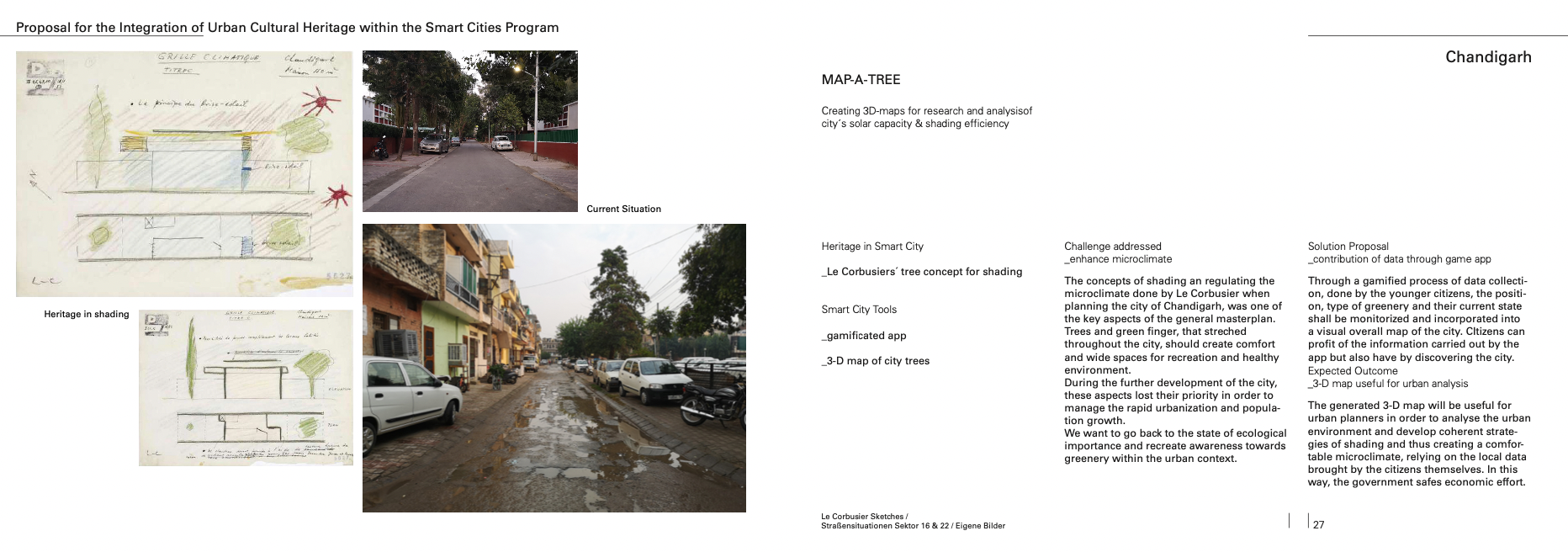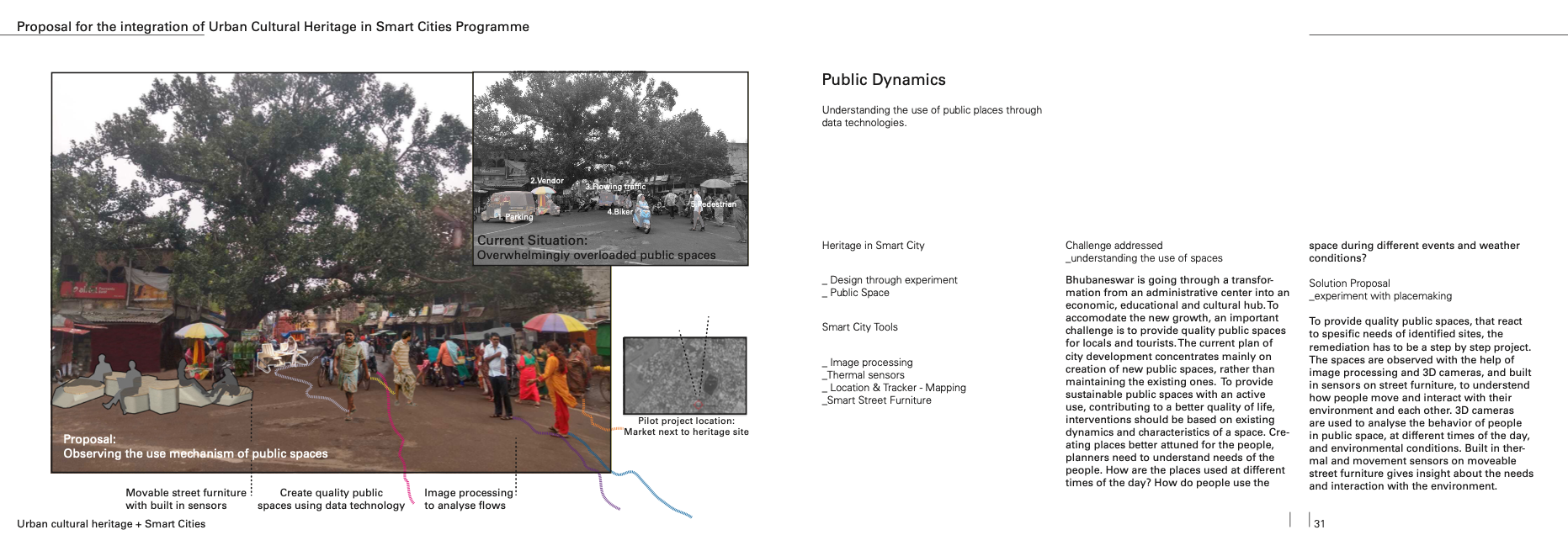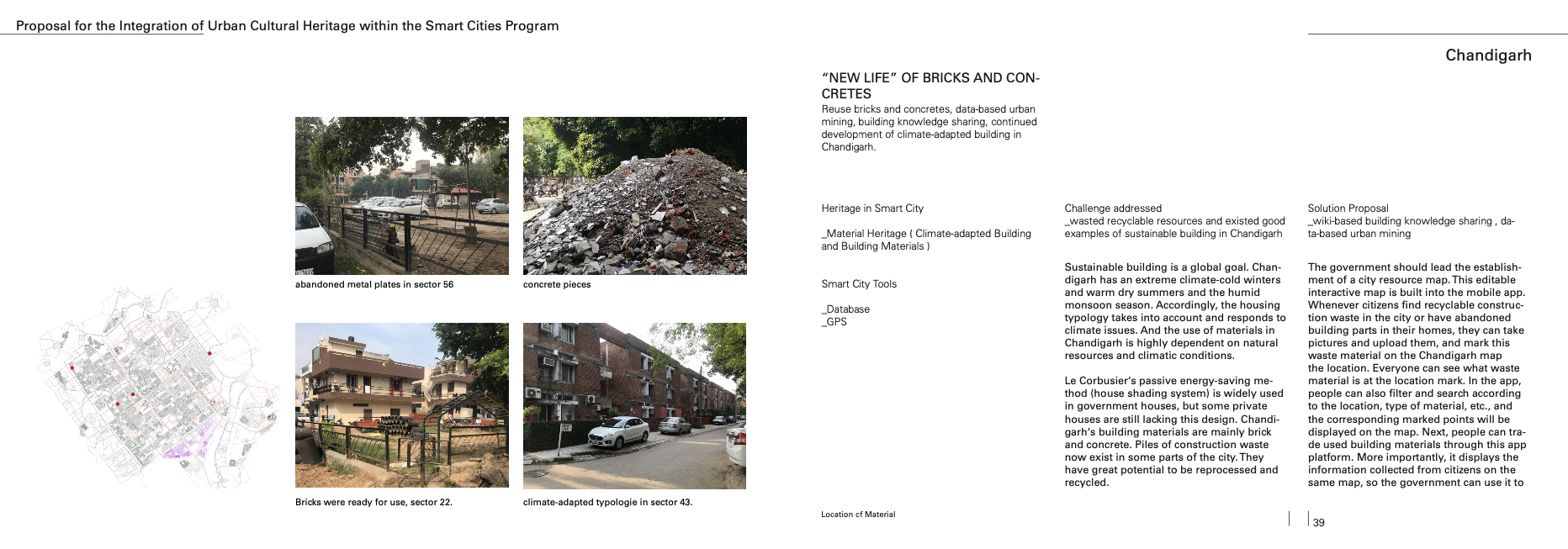India is amongst the many developing countries experiencing a rapid rural to urban shift. Nearly 31% of India’s current popu- lation lives in urban areas and contributes 63% of India’s GDP (Census 2011). With increasing urbanization, urban areas are expected to house 40% of India’s population and contribute 75% of India’s GDP by 2030. This population growth in cities requires a wide development of physical, institutional, social and economic infrastructure. All these aspects are vital in improving the quality of life and attracting people and investments to the City, initiating growth and development. Development of Smart Cities is a step in that direction. Government of India launched the Smart Cities Mission in 2015 collaborating with the State Governments to identify and develop Smart Cities in the country which will also work as the light house to other aspiring cities. Smart Cities Mission envi- sions developing an area within 100 cities
in the country as model areas based on an area development plan, which is expected
to have a rub-off effect on other parts of the city, and nearby cities and towns.
The cities competed in a countrywide com- petition, designed to inspire and support developing smart solutions to improve citizens lives. As of January 2018, 100 cities, that are distributed among the states, have been selected to be upgraded as part of the Smart Cities Mission.
Smart Cities Mission aims to encourage economic growth and improve the quality
of life of people by enabling local area development and introducing technology. Area-based development will transform existing areas, such as redeveloping slums, thereby improving liveability of the whole City. New areas (greenfield) will emerge to accommodate the expanding population in urban areas. Application of Smart Solutions will enable cities to use technology, informa- tion and data to improve infrastructure and services. Comprehensive development in this way will improve quality of life, create jobs and improve incomes for all, especially the poor and the disadvantaged, leading to inclusive Cities.



